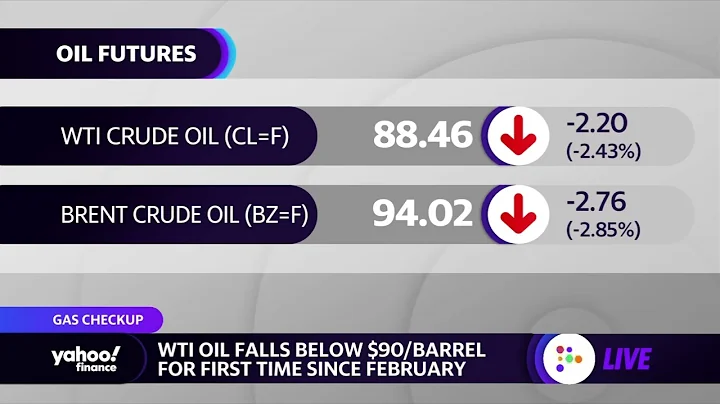At the beginning of the Asian market on Thursday (December 2), U.S. crude oil rose slightly, now trading at 66.22 US dollars per barrel. Oil prices fell nearly 2% on Tuesday. The first case of the Omicron mutant strain appeared in the United States, and the new coronavirus was confirmed in South Africa. The surge in cases has fueled concerns that the Omicron variant could cut oil demand at a time when global supplies are increasing.
will focus on the number of layoffs by challenger companies in the United States in November, the number of initial jobless claims in the United States in the week ending November 27, the OPEC+ Joint Ministerial Supervision Committee, and the OPEC+ Ministerial Meeting of Oil Producing Countries; at 00:30 on Friday, the Federal Reserve will An official spoke.
Positive factors affecting oil prices
[OPEC+ begins to discuss production policy, analysts expect a suspension of production increases to be more likely]
OPEC+ began a two-day policy meeting, and representatives debated the planned increase in production. Outsiders are increasingly predicting that the threat of new virus variants will cause OPEC+ to suspend production increases. Ministers from member states have been tight-lipped.
Iraqi Oil Minister Ihsan Abdul Jabbar Ismaael, one of the few officials to have talked about production, said he would abide by the meeting's resolution whether to increase production or not. Most analysts and traders believe a pause in production increases is more likely.
The situation in the oil market has taken a sharp turn recently. Over the past month, major consuming countries such as the United States have urged OPEC+, led by Saudi Arabia and Russia, to increase supply more quickly, but the emergence of the Omicron variant has caused crude oil prices to fall into a technical bear market, and even a modest increase in production looks risky. .
Diamantino Azevedo, Angola’s Minister of Mineral Resources and Petroleum, said: “A new, potentially more dangerous variant suddenly appeared, and new blockades may follow. In this period of uncertainty, OPEC+ must remain cautious and Ready to take proactive action when market conditions require it," OPEC ministers decided that the issue of oil market balance will be discussed at a meeting on Thursday.
[U.S. crude oil inventories fall]
U.S. crude oil inventories fell last week, while gasoline and distillate inventories increased as demand weakened, the U.S. Energy Information Administration (EIA) said on Wednesday.
Crude oil and refined product inventories have generally been declining as the U.S. economy booms and demand increases. This week's report reversed that trend, if only temporarily, adding to the bearish sentiment that has weighed on oil prices in recent days.
In the week ended November 26, U.S. crude oil inventories fell by 910,000 barrels to 433.1 million barrels, with gasoline and distillate inventories including diesel and jet fuel rising much faster than expected. EIA said U.S. gasoline inventories increased by 4 million barrels this week, compared with expectations for an increase of 29,000 barrels.
Distillate inventories, including diesel and heating oil, rose by 2.2 million barrels, compared with expectations for a rise of 462,000 barrels. As an indicator of demand, the total volume of gasoline products offered by refiners fell 6% in the latest week, although the weekly data is unstable. Over the past four weeks, gasoline product supply has been at 9.2 million barrels per day, the same as pre-pandemic levels in 2019.
Phil Flynn, senior analyst at Price Futures Group in Chicago, said, "Gasoline demand has dropped significantly. Part of the reason may be a drop in holiday demand, so the market will not panic too much," EIA said. Refinery daily refining capacity fell by 9,000 barrels last week. Refinery capacity utilization increased by 0.2 percentage points.
[U.S. corporate employment increased by 534,000 in November]
U.S. companies continued to steadily hire more employees in November, suggesting that employers continue to gradually fill job vacancies that are close to record highs.
Data released by the ADP Research Institute on Wednesday showed that corporate employment increased by 534,000 people in November, which was revised to an increase of 570,000 people in October. Economists surveyed by Bloomberg expected a median increase of 525,000.
The data shows that the labor market is steadily improving; skills mismatch, employees changing jobs, and epidemic-related factors still make it difficult for employers to attract and retain employees. Total employment calculated by ADP remains well below pre-pandemic levels, and emerging omicron strains may curb labor force participation. On Friday, the U.S. Department of Labor will release monthly non-farm employment data, which is expected to show an increase of 525,000 private sector jobs in November.
[Bank of America maintains oil price forecast of $85/barrel next year]
Bank of America maintains oil price forecast of $85/barrel next year, and if air travel rebounds, oil prices may exceed $100. Francisco Blanch, the bank's head of commodities, said in a speech on Wednesday that the Omicron variant may "derail the recovery a little bit, but we don't know how the epidemic will develop."
Blanch also pointed out that the United States does not plan to resume previous epidemic prevention measures. to stop the spread of the variant, and treatments will be available within two months. The bank predicts that global oil demand will reach 100.5 million barrels per day next year. Beyond the Omicron strain, however, oil prices remain exposed to other potential risks, including more releases from strategic petroleum reserves and the easing of sanctions on Iran.
[Tensions between the United States and Russia over Ukraine are rising]
The United States has accused Russia of increasing preparations for a possible invasion of Ukraine and threatened greater retaliation against Russia, indicating that tensions surrounding Russia's troop surge on the border continue to rise.
U.S. Secretary of State Antony Blinken warned at a NATO meeting in Latvia on Wednesday that the United States would impose "high-impact economic measures it has avoided in the past" if Russia invaded Ukraine.
Putin told the Kremlin earlier on Wednesday that "the threat to our western borders is rising," and "the stakes are serious for us." Such tit-for-tat remarks suggested that U.S.-Russian tensions will continue to escalate, despite insistence from both sides Want to deescalate the situation.
Negative factors affecting oil prices
[The first case of Omicron virus infection in the United States was found in California]
The U.S. Centers for Disease Control and Prevention (CDC) confirmed the first case of Omicron virus infection in the United States, further confirming that this virus The strain has spread to most parts of the world.
CDC stated that the public health departments of California and San Francisco confirmed that a recent new coronavirus infection in California was caused by the Omicron variant. The case returned to the United States from South Africa on November 22 and had completed the full course of vaccination. The patient has experienced mild symptoms, is improving, and has been in self-isolation since testing positive. All close contacts have been contacted and tested negative for the virus.
California Governor Gavin Newsom said at a press conference that the case left for San Francisco on November 21, landed the plane the next day, and developed symptoms on November 25. The test was completed on November 28 and showed positive the next day. The patient was not hospitalized. Newsom said at a press conference that "the infected person is doing well now" and is expected to make a full recovery.
The omicron strain originally discovered in South Africa has spread to Australia, Germany, Canada and other places. Researchers are scrambling to study the impact of the new strain.
The US "Business Insider" website quoted former California Department of Public Health official and public health expert Charity Dean as saying that based on a mathematical model analysis of the number of international travelers in the United States, he estimated that there are now about 2,000 cases of COVID-19 in the United States. The Michonne case has not been reported so far simply because the United States has not genetically sequenced enough samples of the virus.
[South Africa’s confirmed cases of COVID-19 in a single day nearly doubled]
As the Omicron strain took root, the number of confirmed cases of COVID-19 in South Africa in a single day nearly doubled from Tuesday. According to South Africa's National Institute of Communicable Diseases (NICD), the country had 8,561 confirmed cases in the past 24 hours, with a test positivity rate of 16.5%.
The institute said in an earlier report that 74% of 249 new coronavirus patient samples that were genetically sequenced in South Africa in November found the mutant strain Omicron, while the Delta strain accounted for a much higher proportion. lower than October. However, while the hospitalization rate is rising, it is far less than during the peaks of previous waves of infection. According to NICD data, 135 people were hospitalized with COVID-19 in the past 24 hours, bringing the total number of hospitalizations to 2,550.
[S&P 500 Index hits its biggest two-day drop since October 2020]
The U.S. stock market hit its biggest two-day drop since October 2020. After the United States confirmed the discovery of the first case of infection with the Omicron variant strain, trading Members assess the latest progress of the epidemic.The S&P 500 rose nearly 2% on heavy volume earlier on Wednesday before giving up gains, with the tech-heavy Nasdaq 100 underperforming major benchmarks, including Tesla and Meta Platforms Inc. Giants plummeted.
South Africa said the number of new coronavirus cases has almost doubled from Tuesday, and the number of cases infected with the new mutant strain has also risen sharply in the United Kingdom, Switzerland and Brazil. The World Health Organization's chief scientist noted that existing vaccines may prevent severe illness associated with the strain, and traders also assessed comments from Federal Reserve Chairman Jerome Powell, who reiterated that the central bank will keep inflation under control and that officials should consider accelerating tapering. Adam Crisafulli, founder of
Vital Knowledge, said, "Risk aversion is the main reason, but there are more factors at play. The market itself is not very confident about this morning's rise. Investors are still trying to understand that it is not just the Omikron virus." strains, as well as the Federal Reserve's new response mechanism. "The Federal Reserve's Beige Book stated that as of mid-November, the economy was growing at a moderate to moderate pace, and prices were generally rising amid supply chain disruptions and labor shortages.
John Kilduff, a partner at Again Capital LLC in New York, said, "When the market is hit by news about variants, you sell first and ask questions later." He expects that further bullish momentum will not resume until U.S. crude breaks through $70 a barrel. .

This article comes from Huitong.com





















